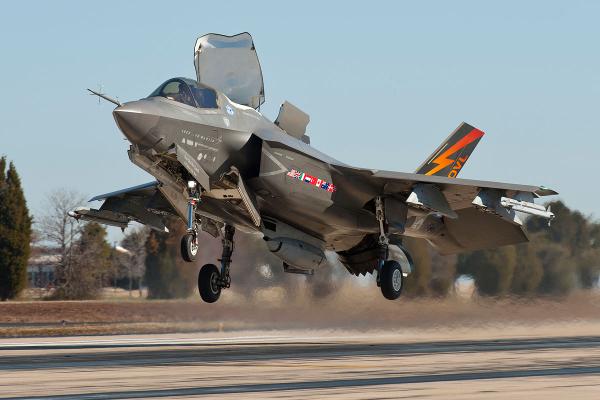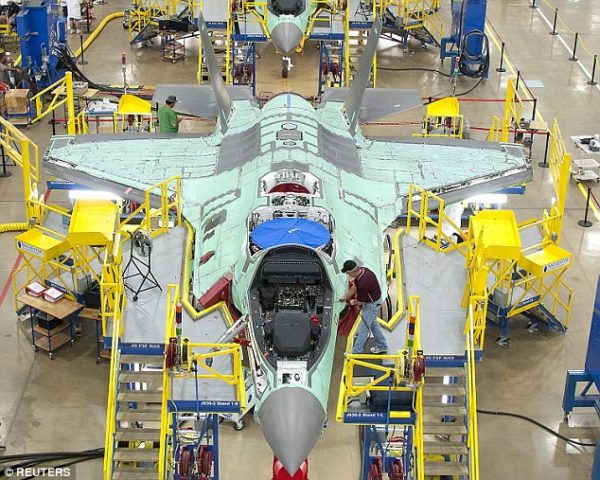
Lockheed Martin Aeronautics would by now, be smiling and thanking its stars for winning the huge United States defense contract. The defense giant has won the contract to build F-35 Lightning Jet Fighters as part of the Joint Strike Fighter (JSF) program.
Although some NATO countries and other allies of the United States are involved in the JSF program, the United States is the principal funder of the building of the aircrafts.
The total cost of the program is projected to be around $1.508 trillion. Since the United States is the lead funder of the project, it means the country’s taxpayers would bear much of the costs—if not, entirely. In fact, the JSF program is the most expensive military weapons system to date. The program has attracted criticism from many observers in the West. In this era of rising poverty – at an unprecedented rate across the world – it is sickening that a global power like the United States would take the lead in such a money-wasting spree. This money, if it were to be invested in ventures to lift people from poverty, a huge difference in the world would have occurred. However, the country’s philosophy is that of war rather than to make peace and change lives for the better.
It is unclear as to how many of the jet fighters would be produced by Lockheed Martin. Details of the program are shrouded in secrecy. However, from what information we have gathered, the Pentagon has so far spent over $400 billion on almost 4,500 F-35s. Even President Donald Trump has described the spending on the planes as “out of control.” Trump demanded a price cut from Lockheed Martin, however, the price cut is impossible because of the previous contracts already agreed upon and signed.
During recent tests on the planes considered combat ready, engineers at the Pentagon detected serious problems within the aircrafts. According to the Pentagon, around 276 different faults have been detected in the expensive war machines.
Also reported, before these 276 faults were detected this year, last year saw an emergence of defects surrounding the ejection systems of the planes; those of which are likely to break the necks of pilots under 136 pounds. This revelation was contained in an 82-page report released on the program in January 2016.
“Testing showed that the ejection seat rotates backwards after ejection. This results in the pilot’s neck becoming extended, as the head moves behind the shoulders in a ‘chin up’ position,” the report stated.
According to a report released by the Pentagon, these latest 276 faults detected in the planes have further worsened the situation for the U.S. government and the manufacturer. The Pentagon said the faults could take up to two years to be rectified, meaning full combat testing of the planes wouldn’t commence until 2019.
The Pentagon was hoping the crucial ‘Initial Operational Test and Evaluation’ tests of the planes would happen in August 2017. But the faults detected means changes in the plans.
“The Joint Strike Fighter (JSF) Program Office (JPO) acknowledged in 2016 that schedule pressure exists for completing System Development and Demonstration (SDD) and starting Initial Operational Test and Evaluation (IOT&E) by August 2017, the planned date in JPO’s Integrated Master Schedule. In an effort to stay on schedule, JPO plans to reduce or truncate planned developmental testing (DT) in an effort to minimize delays and close out SDD as soon as possible. However, even with this risky, schedule-driven approach, multiple problems and delays make it clear that the program will not be able to start IOT&E with full combat capability until late CY18 or early CY19, at the soonest,” the Pentagon said in the report.
The Pentagon’s Office of Operational Testing and Evaluation said in the report that it would concentrate only on critical deficiencies detected – to help correct the timeline problem.
It said: “The Services have designated 276 deficiencies in combat performance as “critical to correct” in Block 3F, but less than half of the critical deficiencies were addressed with attempted corrections in 3FR6.”
The Pentagon said the following critical deficiencies would be given priority, despite the numerous problems detected:
Fixing the 25mm cannon which vibrates excessively and the way it is targeted by the aircraft’s ‘virtual reality’ helmet;
Improvements in the internal diagnostics software — the Autonomic Logistics Information System (ALIS) have also been slow to emerge;
Fixing overheating and premature wear of components in the vertical tails, as well as vulnerability to fire.
“The current schedule-driven program plans to close out testing in 2017 do not include enough time to fix these key deficiencies, nor time to verify corrections in flight test,” the Pentagon said.
Many observers have said the Pentagon is worsening the situation regarding how it intends to fix the problem. According to observers, per the reports released by the Pentagon, it means many deficiencies detected in the planes would not be fixed. This of course, will jeopardize the lives of pilots, as well as putting the entire project at risk.
Before the current Pentagon report was released, the Director of Operational Test and Evaluation at the Pentagon, Michael Gilmore, had warned in a leaked memo that the JSF program office is simply cutting short the plane’s development phase to ensure that schedule and cost goals are met. He said this approach would put the lives of pilots in danger and destroy the objective of the program.
The JSF program is in crisis mode. Scarce taxpayers’ money is literally being thrown away. Many innocent lives also stand to be lost once the machines are ready to kill in active combat.
This article (Pentagon Detects 276 Faults in $1.5 Trillion F-35 Warplanes, Reveals Full Tests Won’t Begin Until 2019) is a free and open source. You have permission to republish this article under a Creative Commons license with attribution to the author and AnonHQ.com.
Supporting Anonymous’ Independent & Investigative News is important to us. Please, follow us on Twitter: Follow @AnonymousNewsHQ










Não entendi… já construiram 4.500 unidades de um avião que não foi testado ??? têm muita coisa suspeita aí… nenhuma industria produz uma quantidade tão grande de unidades sem ter, previamente, realizado todos os testes de qualidade de um produto em fase de lançamento… é um fator imprescindível, mesmo considerando as inovações tecnológicas do produto… e, diga-se de passagem, pelo tempo transcorrido desde o início do projeto – quase 20 anos – corre o risco de já estar ultrapassado tecnologicamente – que seria um desastre… mesmo considerando que o gasto foi realizado por um dos mais importantes atores do complexo industrial-militar dos USA, braço forte dos “banksters”, componente do “governo das sombras” – o verdadeiro governo dos USA… a diretoria da VIRGINIA INC. deve estar perdendo o sono… tanto dinheiro desperdiçado e não conseguiu o objetivo…